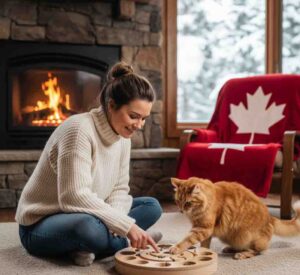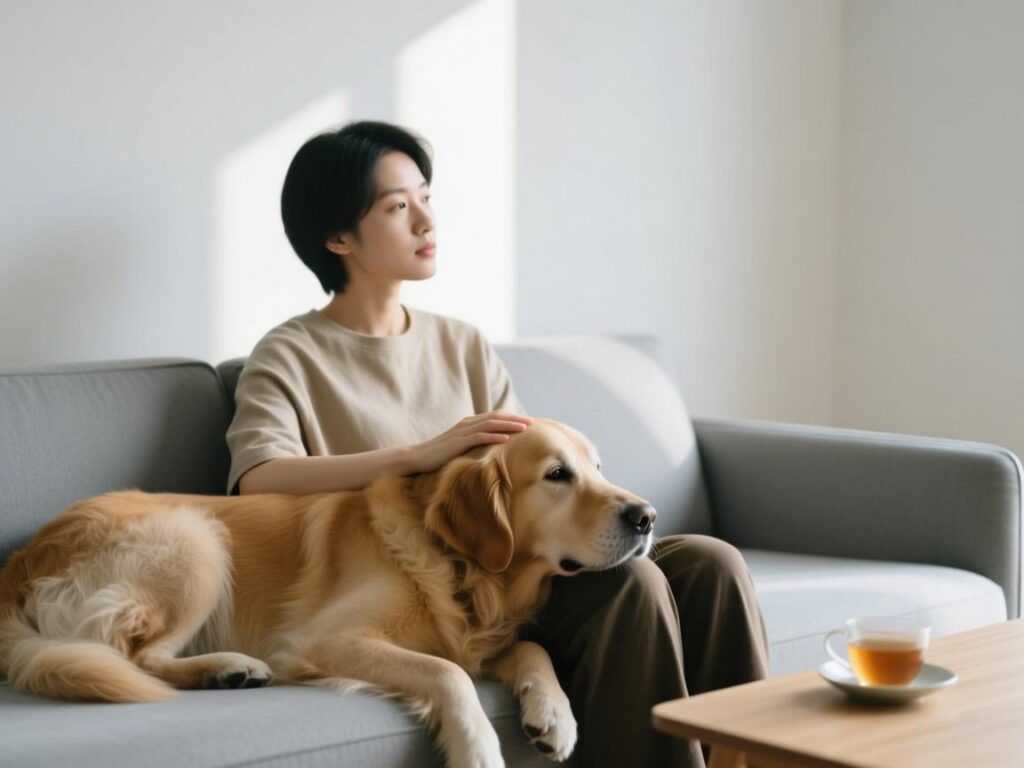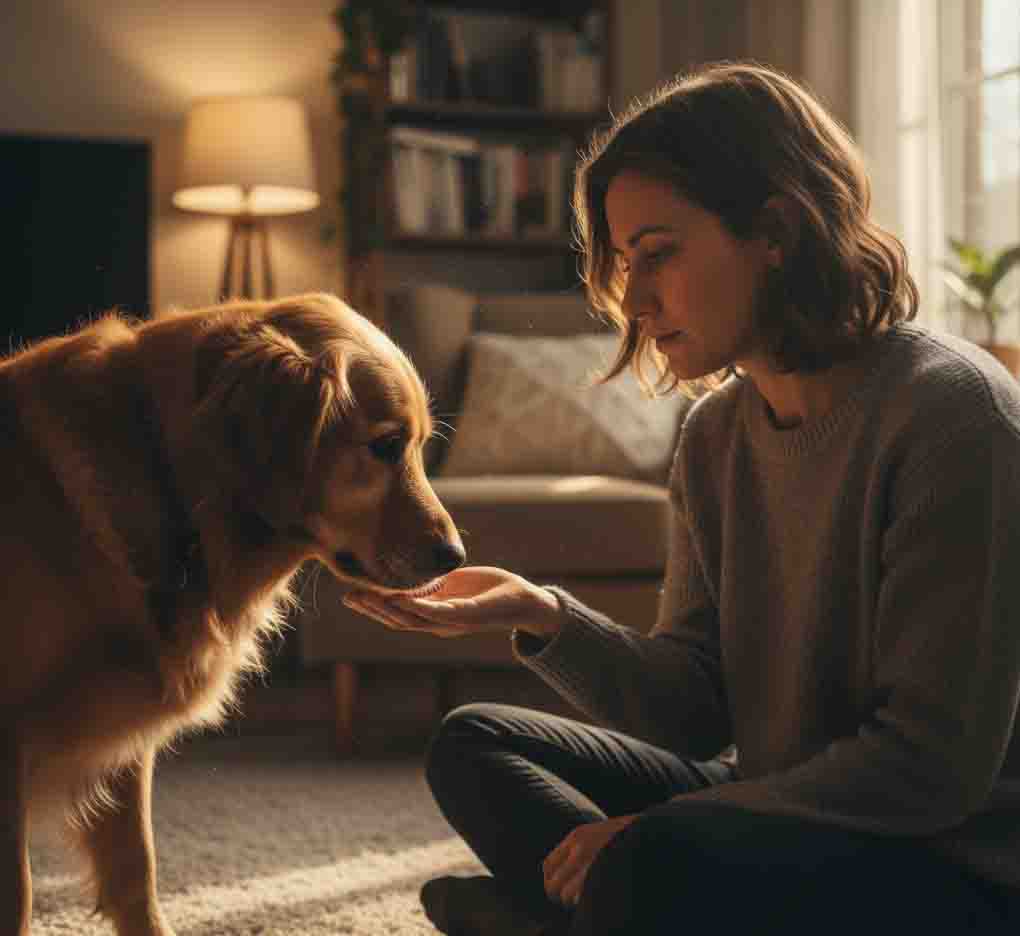Table of Contents
-
Defining the Human-Animal Bond
1. Defining the Human-Animal Bond
More Than Ownership: A Reciprocal Relationship
The human-animal bond represents a mutually beneficial relationship that transcends basic care or ownership. This dynamic connection involves consistent, positive interactions that generate shared emotions and behaviors between you and your pet. Unlike human relationships constrained by language, this bond thrives on non-verbal understanding and emotional resonance that often bypasses cognitive processing.
In the Canadian context, this bond reflects our evolving perspective on companion animals—from utilitarian helpers to family members. Nearly 77% of Canadian households include at least one pet-7, demonstrating how deeply these relationships are woven into our social fabric.
Core Dimensions of the Bond
-
Emotional Connection: The shared feelings of comfort, security, and joy
-
Behavioral Synchronization: The unconscious mirroring of habits and rhythms
-
Psychological Support: The mutual reduction of stress and anxiety
-
Social Recognition: The acknowledgment of each other’s unique personality and preferences
Q: Is the human-animal bond similar for dog and cat owners?
A: While the fundamental emotional connection shares similarities, its expression differs significantly. Dogs often demonstrate their bond through overt loyalty and dependence, while cats typically express connection through selective trust and shared routines. Both relationships can be equally profound despite these behavioral differences.
2. The Science of Connection
The Neurochemistry of Bonding
When you interact positively with your pet, both of your brains release oxytocin—the same bonding hormone that strengthens human maternal and romantic attachments. This biochemical exchange creates a positive feedback loop: gentle touch and positive interactions stimulate oxytocin production, which reinforces further bonding behavior-7.
Research demonstrates that this oxytocin response occurs in both humans and their pets during moments of connection. Simply maintaining gentle eye contact with your dog can elevate oxytocin levels in both of you, while slow-blinking exchanges with cats trigger similar biochemical responses.
The Attachment Theory Framework
Pets form attachment bonds with their human caregivers that parallel child-parent relationships in several key aspects:
-
Secure Base Effect: Your presence provides security that enables exploration
-
Separation Distress: Absence triggers measurable anxiety in both parties
-
Haven of Safety: Your pet seeks comfort from you during frightening experiences
These attachment patterns help explain why some pets develop separation anxiety while others remain secure when alone. The quality of early bonding experiences significantly influences this attachment style.
Cross-Species Communication
Successful bonding relies on developing fluency in your pet’s unique communication style:
Canine Communication Cues
-
Subtle ear positioning and tail carriage changes
-
Eye shape alterations and whale eye manifestation
-
Body weight distribution and posture shifts
Feline Communication Signals
-
Tail positioning and movement patterns
-
Ear orientation and whisker positioning
-
Pupil dilation and blink rate variations
Q: Can you actually measure the strength of a human-animal bond?
A: While no universal metric exists, researchers assess bonding strength through behavioral observations such as greeting intensity, seeking behavior, stress reduction in each other’s presence, and communication accuracy. These observable indicators provide reliable evidence of bond quality beyond subjective feelings.

3. Building a Deeper Bond: A Step-by-Step Framework
Phase 1: Foundational Understanding (Weeks 1-4)
Building a stronger bond begins with deep observation and respectful interaction:
Learn Your Pet’s Unique Language
-
Document their subtle communication signals throughout the day
-
Identify their individual stress, curiosity, and contentment indicators
-
Notice how their communication changes in different contexts and environments
Establish Predictable Patterns
-
Create consistent daily routines for feeding, walks, and play
-
Respond reliably to their communication attempts
-
Respect their need for downtime and personal space
Practice Attunement Exercises
-
Match your breathing rhythm to theirs during quiet moments
-
Observe without intervening during their exploration
-
Mirror their body language in a gentle, non-mocking manner
Phase 2: Active Engagement (Weeks 5-8)
With foundational understanding established, introduce shared experiences:
Develop Shared Activities
-
Engage in cooperative games like puzzle solving or gentle fetch
-
Practice calm exploration during walks without constant direction
-
Introduce novel experiences together in a controlled manner
Implement Positive Interaction Rituals
-
Establish gentle greeting and parting routines
-
Create daily moments of quiet connection without demands
-
Develop cooperative care routines for grooming and handling
Enhance Communication Skills
-
Practice interpreting subtle body language cues
-
Reward voluntary check-ins and connection attempts
-
Use consistent signals for common activities and expectations
Phase 3: Integration & Enrichment (Ongoing)
Strengthen and maintain your connection through continuous development:
Environmental Enrichment
-
Create spaces that accommodate both shared and individual needs
-
Provide mental stimulation that respects their natural instincts
-
Design your living space to facilitate positive interactions
Social Rituals
-
Establish traditions that celebrate your relationship
-
Include your pet in appropriate family activities
-
Create photo or memory records of your shared experiences
Continuous Learning
-
Remain open to your pet’s changing communication styles
-
Adapt to their evolving needs through different life stages
-
Challenge both of you with new cooperative activities
Q: How long does it typically take to strengthen a bond with a rescue animal?
A: The timeline varies significantly based on the animal’s history, but meaningful progress typically appears within 2-3 months of consistent, respectful interaction. Deeper trust often develops over 6-12 months as shared experiences accumulate. The process cannot be rushed, as trust builds at the animal’s pace, not our preferred schedule.
4. Maintaining Connection Through Life’s Changes
Navigating Developmental Transitions
Your bond will evolve through natural life stages:
Age-Related Adaptations
-
Adjust interaction styles as your pet’s physical abilities change
-
Modify activities to accommodate changing sensory capabilities
-
Recognize how cognitive changes affect their social needs
Environmental Changes
-
Maintain connection during moves or household disruptions
-
Help your pet feel secure during travel or vacations
-
Preserve rituals that provide continuity during transitions
Weathering Relationship Challenges
Even strong bonds experience strain during difficult periods:
Addressing Behavioral Changes
-
Interpret behavior shifts as communication rather than rejection
-
Seek to understand the underlying cause of new behaviors
-
Maintain connection while addressing problematic patterns
Managing Separation
-
Create positive separation and reunion rituals
-
Use absence to strengthen rather than weaken your connection
-
Adapt your bond to changing schedules or responsibilities
Q: Can a damaged human-animal bond be repaired?
A: Yes, with patience and the right approach. Repair begins with identifying the rupture cause, respecting the animal’s emotional response, and consistently demonstrating trustworthy behavior. Many bonds emerge stronger after successful repair, as the process demonstrates the relationship’s resilience.
5. Common Bonding Misconceptions
The “Time Equals Bond” Fallacy
Many owners believe bond strength automatically increases with time. However, relationship quality far outweighs relationship duration in bonding significance. A few minutes of fully engaged, positive interaction contributes more to bonding than hours of passive coexistence.
The “One-Size-Fits-All” Assumption
Assuming all animals bond similarly represents a fundamental misunderstanding of relationship dynamics. Each human-animal pair develops a unique connection style influenced by both personalities, experiences, and interaction patterns. What strengthens one bond may weaken another.
The “Treat-Based Connection” Error
While food can facilitate initial connections, over-reliance on treats creates a transactional relationship rather than genuine bond. The strongest connections develop through shared experiences, emotional security, and mutual understanding that transcend food rewards.
The “Instant Bond” Expectation
Media portrayals often suggest immediate deep connections, but real bonds develop through consistent positive experiences over time. The expectation of instant bonding creates unnecessary pressure and may cause owners to misinterpret normal adjustment periods as rejection.
The “Perfect Harmony” Misconception
A strong bond doesn’t mean perpetual agreement or perfect behavior. Healthy relationships accommodate individual needs, occasional misunderstandings, and respectful conflict resolution. The bond’s strength reveals itself not in the absence of challenges, but in how quickly connection restores after disruptions.
Q: How can I tell if our bond is genuinely strong or if my pet is just dependent?
A: The distinction lies in quality of interactions. Dependency manifests as anxiety when separated and constant seeking of reassurance, while a secure bond demonstrates as confidence to explore independently, with frequent but not frantic check-ins. A bonded pet seeks connection; a dependent pet seeks security.



